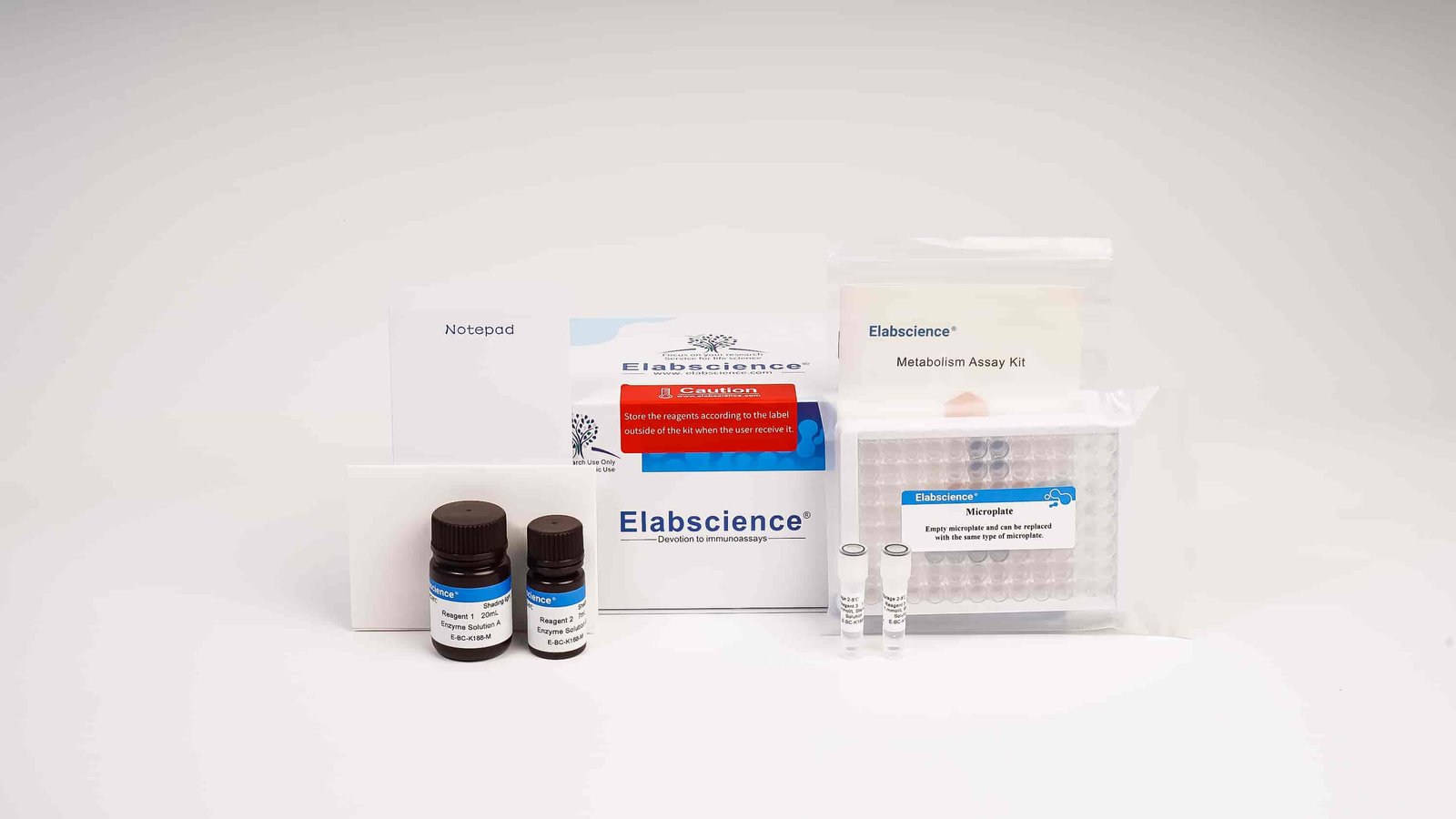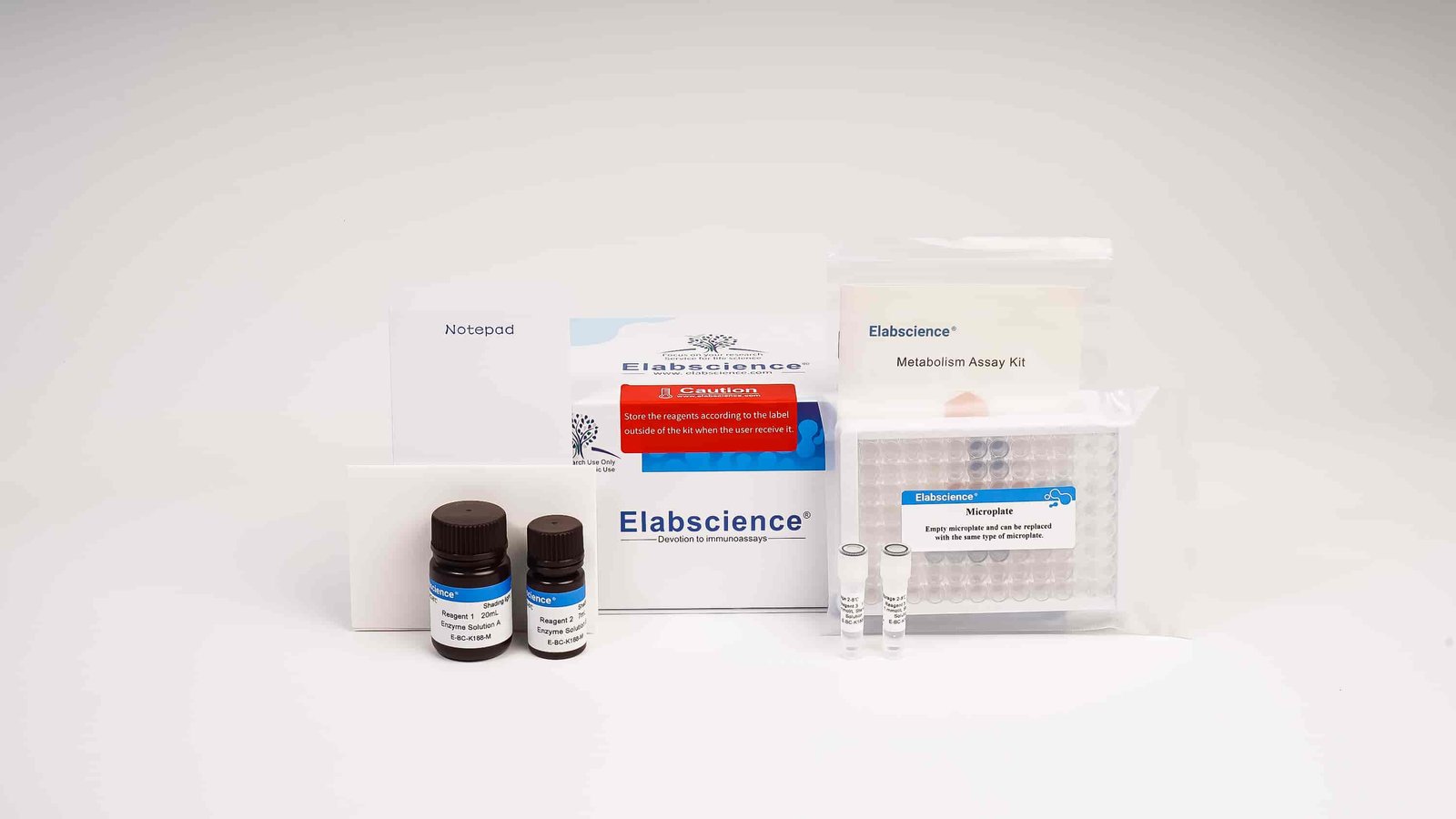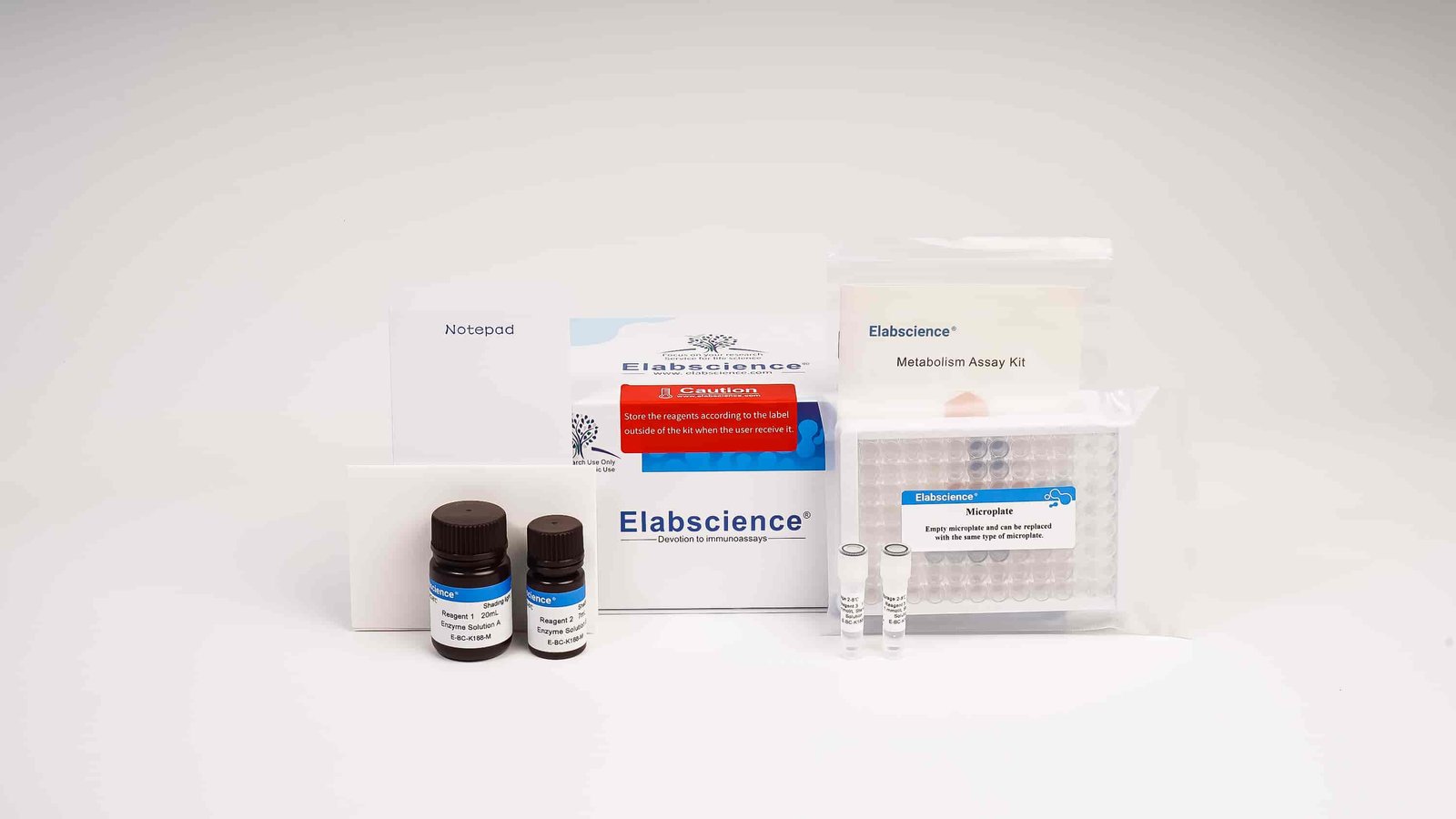Elabscience Assay Kits
Elabscience Assay Kits
Manufacturer: Elabscience
The fluorescent probe provided in this kit specifically targets mitochondria in living cells, which are oxidized by mitochondrial superoxides to produce bright red fluorescence. The probe excited at 396 nm can specifically detect superoxide of supermitochondria, and the mitochondrial reactive oxygen species (ROS) can also be detected using the excitation wavelength of 510 nm.
Manufacturer: Elabscience
Mitochondrial complex IV, also known as cytochrome C oxidase, is one of the major enzymes in the mitochondrial respiratory chain. It oxidizes the reduced cytochrome C converted from mitochondrial complex III to oxidized cytochrome C and consumes oxygen to generate water. Mitochondrial complex IV can catalyze the oxidation of reduced cytochrome C to oxidized cytochrome C, which has an absorption wavelength at 550 nm. Therefore, the activity of mitochondrial complex IV can be quantified by measure the change OD value at 550 nm.
Manufacturer: Elabscience
Mitochondrial complex II, also known as succinate-coenzyme Q reductase, is widely found in the mitochondria of animals, plants, microorganisms and cultured cells. It catalyzes the oxidation of succinic acid in the TCA cycle to fumaric acid, which converts the ubiquinone to a reduced form through the basic unit structures of the complex such as iron-sulfur proteins. Coenzyme Q, the catalytic product of mitochondrial complex II, can further reduce 2,6-dichloroindoxol, which has a characteristic absorption peak at 600 nm. Therefore, the activity of mitochondrial complex II can be quantified by measure the change OD value at 600 nm.
Manufacturer: Elabscience
Mitochondrial complex I catalyzes the reaction of NADH with ubiquinone substrate to generate NAD+ and reduced ubiquinone. The activity of mitochondrial complex I can be quantified by measure the change OD value at 340 nm.
Manufacturer: Elabscience
NADP-MDH catalyzes the conversion of malic acid and NADP+ to oxaloacetic acid and NADPH. NADPH makes WST-8 orange under the action of electron coupling agent. The activity of NADP-MDH can be calculated by measuring the change of absorbance value at 450 nm.
Manufacturer: Elabscience
The probe in this kit has no fluorescence outside the cell. When it enters the cell, it will emit green fluorescence after hydrolysis by the intracellular ester. The fluorescence peaks at excitation wavelength 490 nm and emission wavelength 525 nm, and the fluorescence intensity is proportional to the calcium ion concentration.
Manufacturer: Elabscience
α-Ketoglutaric acid and alanine can be combined with fluorescent probe products under the action of a series of enzymes. The content of α-ketoglutaric acid in samples can be determined by measuring the fluorescence value.
Manufacturer: Elabscience
Acetyl-CoA is an essential cofactor and acyl carrier in the enzymatic acetyl transfer reaction. It can be formed by oxidative decarboxylation of pyruvate in mitochondria, oxidation of long-chain fatty acids, or oxidative degradation of certain amino acids. Acetyl-CoA is the starting compound of the citric acid cycle. The detection principle of this kit is that Acetyl-CoA is converted into other substances under the condition of enzyme catalysis, and the resulting fluorescence is detected by fluorescence microplate reader at the maximum excitation wavelength of 535 nm and the maximum emission wavelength of 587 nm.
Manufacturer: Elabscience
Fatty acid oxidation (FAO) is the main pathway of fatty acid decomposition in the body, which can supply a large amount of energy required by the organism. FAO is also the transformation process of fatty acids. The length of fatty acid chain required by the organism is different. Through oxidation, long-chain fatty acids can be transformed into fatty acids with suitable growth degree for the organism metabolism. The detection principle of this kit: FAO process consumes the substrate and NAD+, and generates NADH. Under the action of electron coupling agent and chromogenesis agent, the orange red substance is generated, which can be detected at 450 nm.









